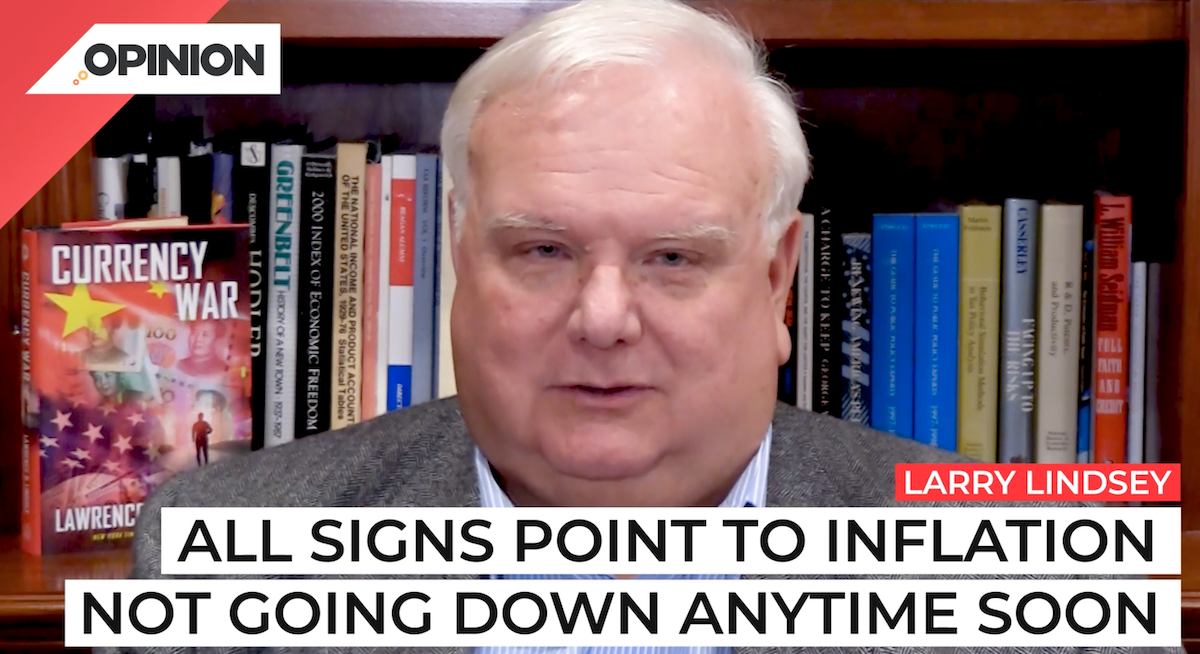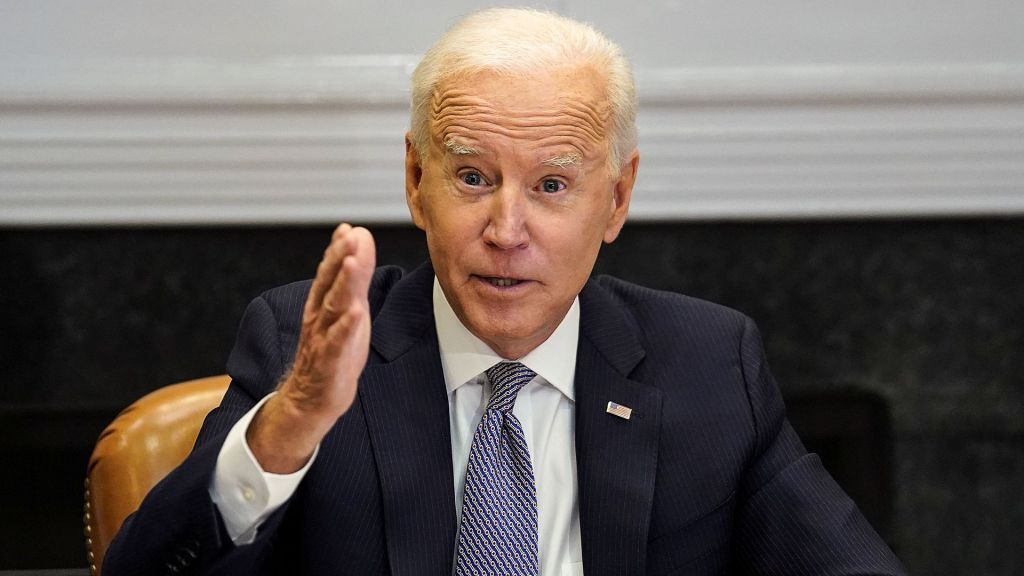
Commentary
-
Our commentary partners will help you reach your own conclusions on complex topics.
The Labor Department released a shocking number.
Consumer prices rose nine tenths of a percent just in the month of October. That’s one of the highest readings in decades. This wasn’t supposed to be that way. If you listen to the so-called experts, they said that inflation was supposed to be over by now. The federal reserve, for example, forecast that the whole year’s inflation would be 1.8% when they met last December. And even this March, they said it was only going to be 2.4%. Um, so far this year it’s been running at a 7% annual rate, roughly three times the Fed’s forecast, but that didn’t stop them from forecasting declines in inflation. Next year, they said that inflation would drop to 2%, both in 2022 and 2023. And it wasn’t just the federal reserve. One of the largest money managers in the country, PIMCO put out a piece in April…titled, “dealing with the inflation headfake”… meaning it’s going to go away.
It was false. And just recently, Treasury secretary Yellin said that inflation should normalize by the end of 2022 second half. Well, what does normalize mean? Is it going to be less than the current inflation pace of 7% and that wouldn’t be very normal?
Or how about the 5% pace that we’ve seen in just the last three months? Or how about the official target rate of having just 2% inflation?
I think Yellen was probably thinking about 2% but said normalize because she didn’t want to commit to that. The fact is that we are having the beginnings of a wage price spiral. I would bet that inflation next year would be roughly as high as it was this year. Maybe even a little bit higher. And I don’t see a lot of end in sight in 2023. The main reason is that workers have been falling behind. Wages have only been rising at a 4.3% rate this year, where prices went up seven 7%.
That means that workers have been falling behind. They are literally running 2.7% poorer after inflation than they were last December. Well, you know, what would anyone do under those circumstances?
They’d want to catch up after all, the labor market is very tight. If you go to your boss and say, “I’m going to quit, unless you give me a better raise,” odds are right now, you’ll get the raise. So wages will go up more, but that’s going to simply put more pressure on costs. And when costs go up, firms try and pass on those higher costs to consumers in the form of higher prices.
This is the beginnings of a wage price spiral. It’s very similar to what happened in the 1970s. They’re very, very hard things to end. Virtually every year where inflation has been this high. As of October, it finished the year, even higher than it had been in October and the following year was higher as well.
So the odds based on history are quite high that 2022 at least is going to be higher than 7% in terms of inflation. In fact, the only reason to bring inflation down, excuse me, to have it come down is the federal reserve hikes interest rates dramatically. They’re not going to do that.
2022 is an election year. Maybe they’ll add half a point maybe to their overnight interest rate by the end of the year, but that would still keep the cost of overnight money under 1%.
Who wouldn’t borrow to buy something when that something is going up at 7% and the cost of borrowing for it is based on a number like 1%?
No inflation is not coming down, but there’s a subtle reason why the fed and even the government might not want it to come down very much. We just ran up an enormous amount of debt during the COVID experience.
Whereas our debt used to be perhaps 75 or 80% of GDP, it’s now up to 125% of GDP. GDP is the size of the economy that could become crippling.
If interest rates go up, remember Uncle Sam is the biggest borrower in the country by far. So it doesn’t want to pay more for what it borrows…but it gets better for the government right now. The cost of government borrowing is way below the inflation rates. So what happens if that continues? Well, if inflation continues at 7%, the cost of paying back a thousand dollar bond in, 2030 is only going to be 500 in terms of dollars of the day, the purchasing power of the day. So the person will be getting his or her money back thousand dollars, but it’ll only buy $500.
That makes it much easier on the government to return the money. So I will bet that we’re likely to have higher inflation for quite some time. And we’re not going to see the fed catch up to the inflation with regard to interest rates. Last week’s bad numbers were just a sign of what’s ahead.
-
President Biden just isn’t cool
For some Americans, politics is only about policy, while others prioritize core values, ideas, aspirations or beliefs. Still, for others, politics may be a reflection of culture, where voting serves as a symbolic act to proclaim cultural group identity. But for some Americans, who they vote for and support is more of a popularity contest,…
-
Federal Reserve policy should be more restrictive
The American economy is booming, with high GDP growth, record-low unemployment, and wage gains for median workers. Over the past few quarters, U.S. economic growth indicators have consistently outperformed official projections. But the U.S. Federal Reserve recently conceded that its policies might be too restrictive, hindering the full potential of the U.S. economy, which the…
-
Celebrate tight labor market, but don’t cut interest rates
While President Joe Biden has been celebrating U.S. economic success, many Americans are still unhappy about the economy. So who’s right? The most recent jobs report for February showed that while the unemployment rate rose slightly to 3.9%, job gains were higher than expected, with the total coming in at 275,000 versus the expected increase…
-
Social and economic class will define 2024 election
Following in the footsteps of FDR, Democratic support in the past hundred years has drawn largely from working-class individuals, labor unions, and civil society organizations. Republican support, conversely, tended to rely upon larger corporate donations and the support of high-income individuals. In 2024, these traditional roles are evolving, and the new reality of campaign finance…
-
Black swan events make next US president difficult to predict
In November, Americans will cast their votes to elect a new president and Congress. Despite significant indicators suggesting dissatisfaction with the economy, posing a challenge for President Biden’s potential reelection, predicting the winner remains challenging due to all the variables at play. Straight Arrow News contributor Larry Lindsey utilizes a recent Gallup poll to offer…
Latest Opinions
-
 AP Images
AP Images
Department of Justice cracking down on carjackings in 7 states
-
 Getty Images
Getty Images
Dozens detained during pro-Palestinian protests at Columbia University
-

FBI director warns Chinese hackers waiting for ‘just the right moment’ to strike
-
 Getty Images
Getty Images
Israel carries out strike against Iran
-
 Getty Images
Getty Images
More Dems signal willingness to save Johnson from speakership vote
Popular Opinions
-
In addition to the facts, we believe it’s vital to hear perspectives from all sides of the political spectrum.


